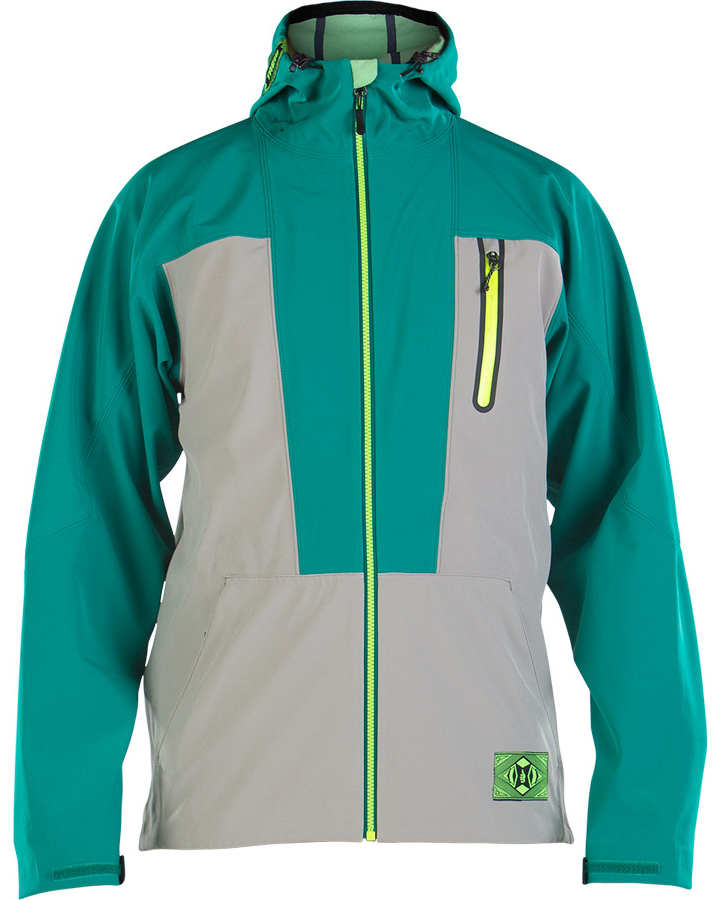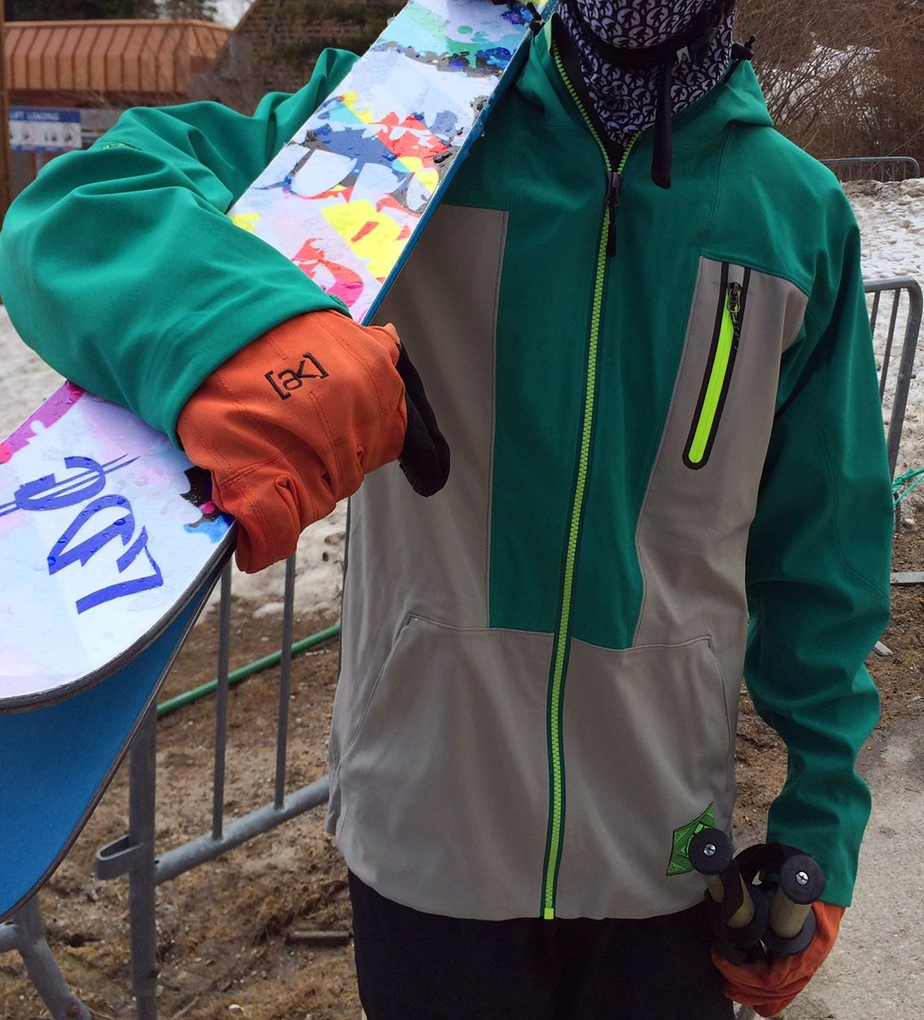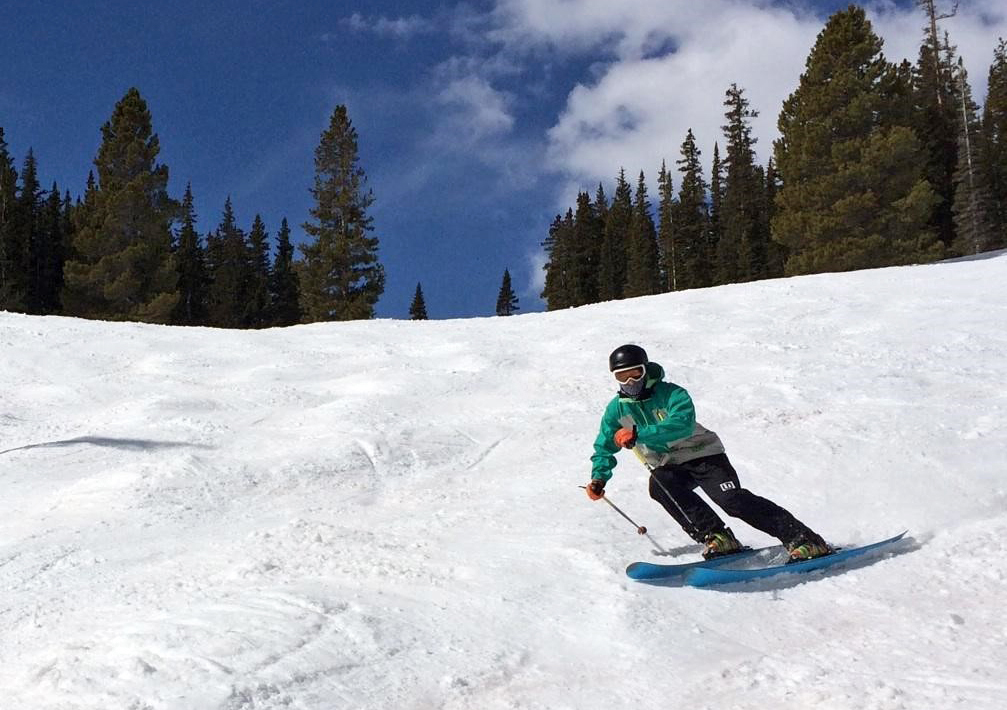
TREW Swift Jacket
Size: Medium
Weight: 21oz (595g)
Color: Emerald Gray
Features:
- Polartec Power Shield® soft shell fabric
- Fully taped construction
- YKK VISLON Aquaguard® center front zipper
- External-access chest pocket with YKK Aquaguard® zipper
- Concealed zip hand pockets
- Adjustable hood with fleece-lined interior
- Seamless shoulder design
- Low-profile cuff with laminated hook-and-loop tab adjustment
MSRP: $280
Reviewer: 5’10”, 135 lbs.
Days Tested: 6
The TREW Swift is one of many products in the soft shell market, which is an interesting segment of the outerwear world. Soft shell jackets sit between insulators and hard shells, and depending on the fabric, can seem almost as thin and protective as a hard shell, or as soft and fleecy as an insulator.
The Swift falls almost right in the middle of this soft shell spectrum. It weighs in at 21 ounces, putting it on par with some of the heavier 3-layer hard shells on the market, but it also has a fleece lining that offers far more insulation than any hard shell.
Fabric & Performance
The TREW Swift uses Polartec Power Shield, which is one step below Polartec’s Power Shield Pro soft shell fabric in terms of waterproofing. The Power Shield fabric has a typical 3-layer construction composed of: a nylon face fabric (a DWR treated stretch fabric), a weather resistant laminate (probably ~1-3K waterproof and highly breathable) and an interior layer (laminated fleece).
The face fabric is 4-way stretch, quite comfortable to wear, and seems pretty durable. The fleece on the Swift’s interior is warm, soft, and so far, quite durable. I really like TREW’s choice of fabrics on this jacket.
In terms of performance, the Swift is definitely very breathable. It breathes a bit better than other jackets with Polartec NeoShell I’ve tested, like the Westcomb Switch Hoody and Mountain Equipment Centurion.
The Swift doesn’t seem to breathe quite as well as my Patagonia Knifeblade jacket (review coming soon), which uses Polartec Power Shield Pro. Comparing the specs of the Power Shield membrane used on the Swift to those of Power Shield Pro, the latter should offer better water and wind protection, but be less breathable. However, I think the Swift’s heavier fleece lining and wide (⅝”) seam taping are to blame for its slightly worse breathability relative to the Knifeblade. The Knifeblade has a very thin tricot liner and no seam taping.
When it comes to warmth, the Swift is warmer than most any baselayer and a midlayer (like the Patagonia R1), but is still rather thin, so it’s not as warm as the Patagonia Nano Puff, the TNF Radium, and the Marmot Alpha Pro (which is only just slightly warmer).
Fit & Functionality
The Swift has a good, versatile fit. I’d call it a freeride silhouette that sits somewhere in the middle between a shell and insulating midlayer. What I mean is that the Swift is a bit longer in the arms and torso than your standard mountaineering shell, but it has more of a body hugging fit than most “freeride” shells, which are more relaxed. The Swift fits similarly to a mountaineering shell but it has a bit more room in the arms and a touch of length added to the torso. This means it’s casual enough to wear around town, but slim enough to be practical on big objective and technical days in the backcountry.

TREW clearly intends the Swift to function partially as a shell and partially as an insulator, and with that objective in mind, I think they hit nail on the head in terms of the fit. The only thing I can’t do well with this jacket is layer it under a slimmer/shorter mountaineering shell—it’s just a bit too long for that.
I don’t think this incompatibility with slim fitting mountaineering shells is a strike against the Swift, it just works best as a layer under roomier shells. After all, If I am going out in a mountaineering shell, I’d want to be layering with a more breathable mid layer anyway. And the slightly more relaxed fit of the Swift allows you to layer underneath it with a variety of thicker baselayers and it’s just as suitable to wear at the bar as on the hill.
The hood on the Swift is that of a midlayer; it will not fit over a helmet, but it will fit nicely over your head with or without a beanie.
Features
The Swift is mercifully light on features. Two hand pockets and a chest pocket are paired with a pretty standard set of shell features: taped seams, waterproof zips, and an adjustable hood.
The two “hoodie-style” hand pockets each have a hidden zipper that are comfortable when your hands are in the pockets, but are sometimes difficult to unzip. Another issue with this style of pocket is that snow can build up under the flap because it’s tilted facing up. Fortunately the zippers on those hand pockets are waterproof, and I haven’t noticed too much leakage happening on big snow days.
This review wouldn’t be complete without a few comments on the style of the jacket, though I admit these are mostly related to matters of personal preference. I think the color pallet is tastefully retro and rather subdued compared to some other offerings from TREW. The only thing I don’t really like about the Swift’s styling is the excessive branding on the outside of the jacket. There are 4 TREW logos on the outside of the jacket, some of which are quite large.

Fleecy soft shells are tough to make and, as a result, the inside of this piece isn’t that pretty. It is hard to tape seams over the loft of the fleece, and on top of that, it looks like some of the tricot used for the interior part of the pockets was a bit difficult to cut as there are some frayed edges. This should only have a minor effect on durability but, nonetheless, it would be great if the nice finish on the outside of the jacket was mirrored on the inside, too.
Bottom Line
The TREW Swift is a great mid-weight soft shell made with excellent materials. The Swift’s versatile fit lets it function well as a light insulator, a soft shell, and a nice après ski jacket, too.
Plus, the Swift is currently on sale, which is a great deal if you’re looking for a soft shell.
